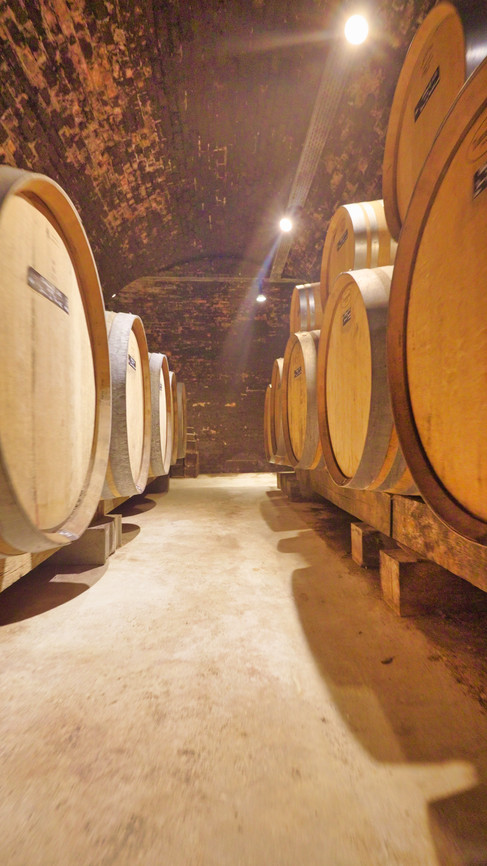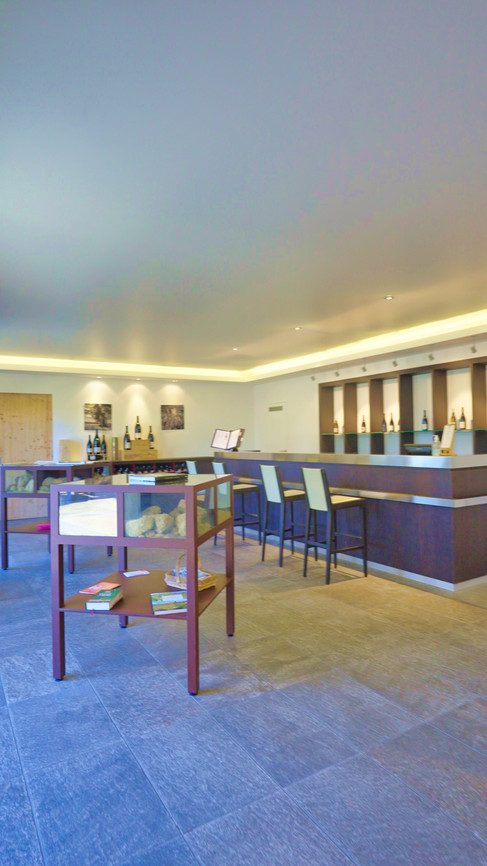Le Clos du Caillou (Châteauneuf-du-Pape, France)
- Joe Benvenuto
- Apr 2, 2023
- 2 min read

Originally a hunting preserve, the Pouizin family transformed the wooded area into the vineyard known as Les Clos du Caillou in 1955. The host for our #121 wine experience, Céline, elaborated on the estate’s history pointing out the unique shape of the Châteauneuf-du-Pape boundaries on a map hanging in the tasting room. Before the Pouizin family took over, the French government visited the area in hopes of defining the geographical boundaries of the famous French wine appellation in 1936. Instead, armed caretakers forced the government men out of the area, thus excluding the location of Les Clos du Caillou from the Châteauneuf-du-Pape AOC. It's interesting how people, rather than terroir, can influence vineyard appellations!
Concluding Les Clos du Caillou's historical and geographical overview, Céline invited us to tour the wine production facilities and the winery's cellars. The winemaker vinifies the different vineyard plots separately, utilizing the indigenous yeasts from the winery and the grapes to begin fermentation. Additionally, the winemaker leverages the inert stainless steel vats for the white and rosé wines while using large wooden casks and cement tanks for the red wine vinification process.
The family produces 15 wines from a diverse area of vineyards both inside Châteauneuf-du-Pape and outside, known as Côtes du Rhône, and we had the opportunity to taste six in our seated tasting with Celiné. The 2020 Les Quartz Châteauneuf-du-Pape left the most remarkable impression from the lineup. The pale ruby coloration combined with the red fruit (ripe plum, strawberry) and high alcohol level of 15% ABV supports the 85% Grenache contribution to the wine's blend, while the evidence of black fruit (blackberry, black plum) points towards the 15% of Syrah in the wine. The wine’s medium acidity is due to Grenche’s naturally low and Syrah's medium to high acidity levels, combined with the warm, Mediterranean climate of Châteauneuf-du-Pape. The wine's flavors of oak and vanilla resulted from the 14 months in foudres and old oak barrels.

We learned from Céline that the average age of the vines used to produce this wine is 50 years old, and the surface of the vineyard is covered with large round stones predominately of quartzite (note the name of the wine) known as galets, with underlying sandy soil. The low fertility and exceptional drainage of the galets and underlying sand naturally restrict yields and increase the flavor concentration of the final wine.
Please check out the YouTube video of our experience here.
Experience Rating: 3 Stars
Brodi’s Rating: 1 Paw Up
Website: https://www.closducaillou.com/
Pet-Friendly: Yes
Experience Vibe: Private Experience, Vineyard and Winemaking Facilities Tour, Seated Tasting
Reservations Needed: Yes
.png)








Comments